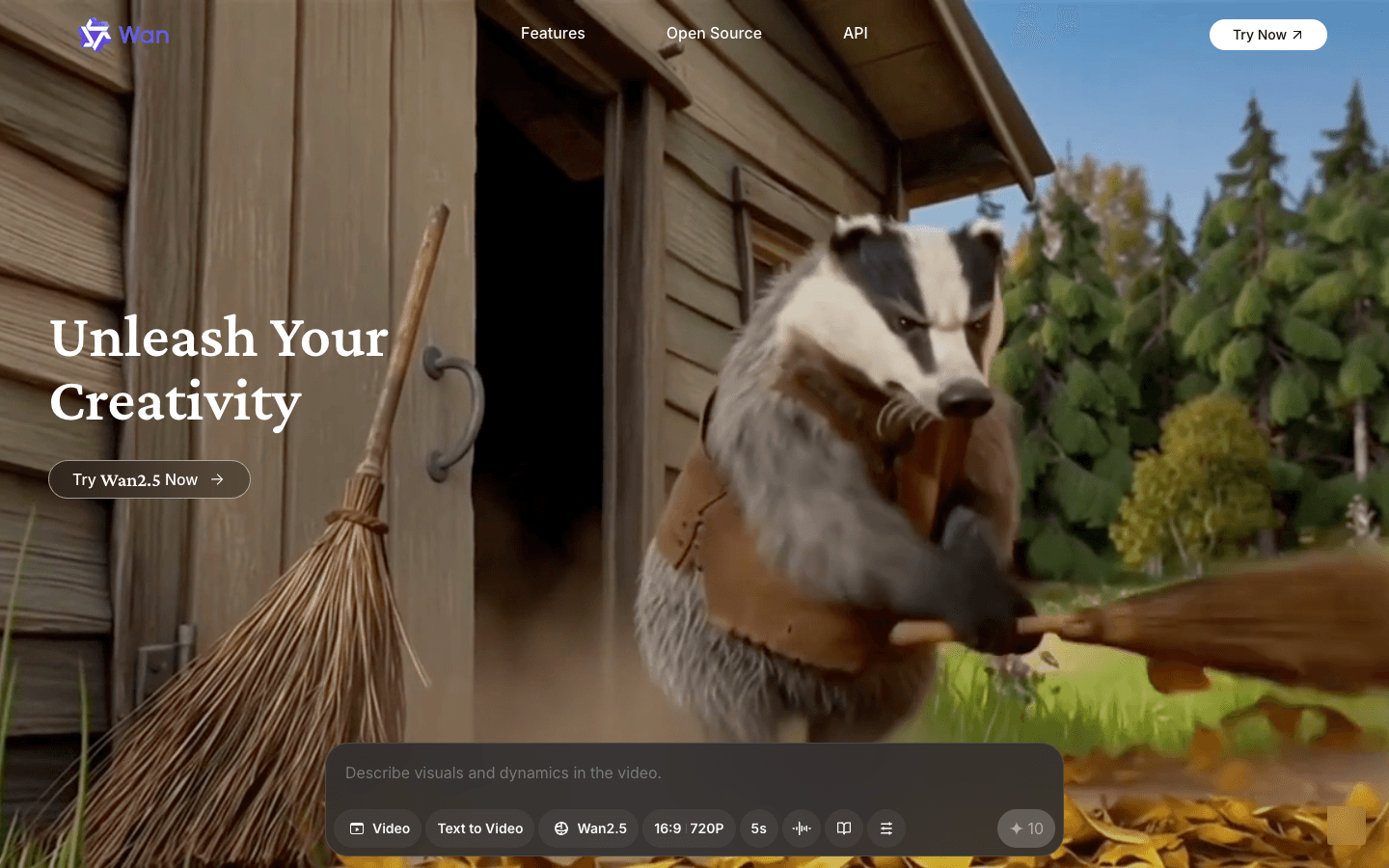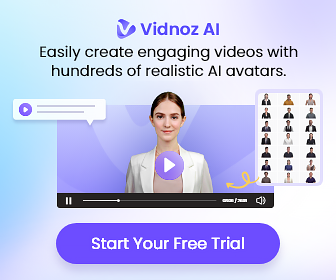
Wan AI
Generate cinematic videos from text, image, and speech

Overview
Wan AI is a leading AI video generation model and platform that turns text, images, and audio into cinematic, production-ready video. Built and maintained at https://wan.video, Wan AI combines open-source research models with a robust API platform to serve creators, developers, and enterprises.
The Wan2.x family (including Wan2.2 and Wan2.5) introduces innovations like a Mixture-of-Experts (MoE) diffusion architecture and a high-compression Wan2.2-VAE to offer superior visual fidelity while keeping inference costs practical. That means users can generate 720P, 24fps clips with rich temporal-spatial dynamics and realistic textures, often on a single consumer GPU such as the 4090.
Wan AI supports multiple generation modes: text-to-video, image-to-video, speech-to-video, text-to-image, and instruction-based video editing. The platform focuses on synchronized audio-visual outputs, high-fidelity voice and ambient sound integration, and accurate on-screen text rendering. Wan2.2 emphasizes cinematic aesthetics via curated aesthetic datasets, improved prompt adherence, and better motion stability compared to previous releases.
For practitioners and researchers, Wan publishes open-source checkpoints and technical details on its GitHub and research pages linked from https://wan.video, enabling reproducible experiments and custom deployments. On the integration side, Wan AI exposes high-performance, developer-friendly APIs for production use. The API supports base64, file, and URL inputs and is designed for high-speed inference through parallel processing and distributed acceleration.
Wan AI is well suited for AIGC product teams building generative video features, marketing teams producing short-form clips, game studios prototyping animated sequences, and research labs exploring multimodal reasoning. Whether you need a quick text-driven promo, an audio-driven character animation, or fine-grained instruction-based edits, Wan AI blends open-source innovation with enterprise-grade APIs to accelerate video creation workflows.
Core Features
- Text-to-video generation with cinematic 720P 24fps output
- Image-to-video synthesis preserving subject and style fidelity
- Speech-to-video that drives lifelike facial and body motion
- Instruction-based video and image editing with dialogue control
- Open-source Wan2.x models for research and local deployment
- Mixture-of-Experts architecture for higher quality, efficient inference
- High-compression VAE enabling fast 720P generation on consumer GPUs
Use Cases
- Marketing: generate 10-15 second product promo clips from copy
- Social media: create short cinematic reels from text prompts
- E-learning: produce narrated explainer videos from scripts
- Character animation: animate avatars using voice clips
- Advertising: prototype multiple ad variations quickly
- Game dev: create in-engine cutscene concepts from images
- Film previsualization: storyboard motion with text-directed scenes
- Localization: generate multilingual video variants with synced audio
- AR/VR content: produce short immersive sequences for testing
- Research: benchmark open-source video models and pipelines
Pros & Cons
Pros
- Open-source models for reproducibility
- Multimodal: text, image, and speech inputs supported
- Cinematic 720P output at 24fps
- MoE architecture improves generation quality
- High-compression VAE enables faster inference
- API-first design for easy developer integration
- Runs on single consumer GPU like 4090
- Strong prompt adherence and visual reasoning
- Accurate on-screen text and realistic textures
- Audio-visual synchronization with high-fidelity voices
- Scalable platform suitable for enterprise use
- Comprehensive documentation and user guides
Cons
- Higher resolution requires more compute
- Longer videos increase generation time significantly
- Some stylized prompts need iterative tuning
- Real-time editing capabilities are limited
- Advanced features require developer integration
- Legal and policy constraints apply to outputs
FAQs
Video Review
Wan AI Alternatives

Wondershare Virbo
Generate Engaging AI Videos in Minutes!

Higgsfield AI
Cinematic AI video generator with pro VFX control

Leonardo AI
AI Image Generator for Art, Video & Design

Pippit AI
Free AI video generator for e-commerce and social

Google Veo 3
Fast, realistic text-to-video with native audio

RunComfy
RunComfy: Top ComfyUI Platform - Fast & Easy, No Setup

Dzine AI
Controllable AI image and design studio

Viggle AI
Remix anyone into viral meme videos

MindVideo AI
Free text-to-video maker with 4K AI effects

Dreamina AI
Dreamina AI - Text-to-Image and Video Creator

Animon AI
Create anime videos for free
Featured

AI Text Summarizer
AI Text Summarizer That Rocks: Faster Content Analysis

Animon AI
Create anime videos for free

Google Nano Banana
Fast multimodal Gemini model for production

Higgsfield AI
Cinematic AI video generator with pro VFX control

Neurona AI Image Creator
AI image generator; AI art generator; face swap AI

AI Book Summarizer
AI Book Summarizer That Makes Books Easy to Grasp

Blackbox AI
Accelerate development with Blackbox AI's multi-model platform

Kimi AI
Kimi AI - K2 chatbot for long-context coding and research

Sora 2
Transform Ideas into Stunning Videos with Sora 2

Free AI Article Summarizer
Free Article Summarizer

Wan AI
Generate cinematic videos from text, image, and speech

Ask AI Questions Online
Ask AI Questions for Free – Smart, Fast, and Human-Like Answers

ChatGPT Atlas
The browser with ChatGPT built in

Abacus AI
The World's First Super Assistant for Professionals and Enterprises

Tidio
Smart, human-like support powered by AI — available 24/7.

Free AI PDF Reader
Free AI PDF Reader – Smarter Way to Understand Any PDF

